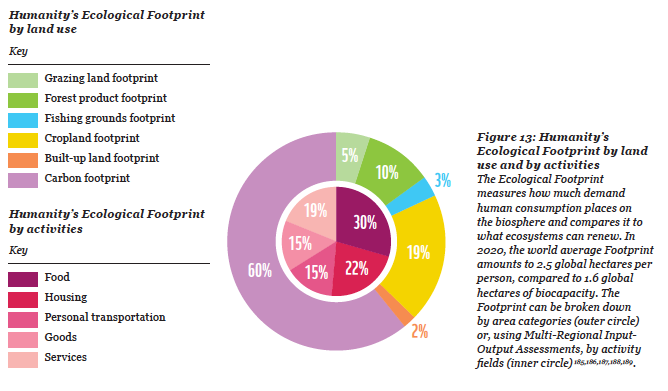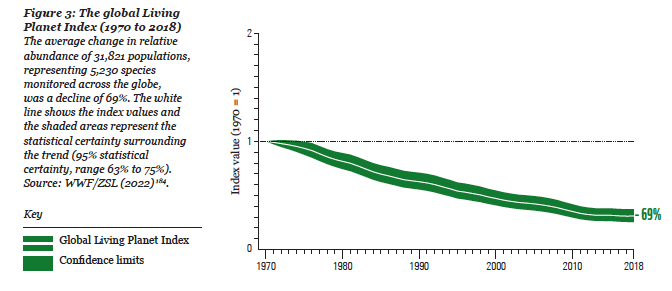By Don Pinnock 16 Oct 2022
The pressure we are placing on the natural world is driving an escalating crisis in nature. We can turn back from biodiversity meltdown, but time is running out.
Earth’s wildlife populations are in freefall. A report by 89 global scientists has found that between 1970 and 2018, the abundance of non-domestic mammals, birds, fish, amphibians and reptiles plunged by 69%.
During that time, humans continued to chop down forests, consume beyond the planet’s limits and pollute on a massive scale. The scientists identified seven key threats to wildlife: agriculture, agriculture, hunting, fishing, logging, pollution, invasive species and climate change.
The Living Planet Report, produced by the World Wide Fund for Nature (WWF) and the Zoological Society of London, analyses 32,000 species populations to measure the abundance of wildlife across all continents. Providing a snapshot of the health of our natural world, it notes that there is cause for dismay and that time is running out to turn back from biodiversity meltdown.
“Humanity,” says the report, “is overusing our planet by at least 75%, the equivalent to living off 1.75 Earths. This overshoot erodes the planet’s health and, with it, humanity’s prospects.”

Humanity’s ecological footprint by land use. (Graph: Supplied)
Latin America, which includes the Amazon, had the steepest decline in wildlife abundance — a 94% drop in 40 years. Africa had the second-largest fall at 66%, followed by Asia and the Pacific.
Visit Daily Maverick’s home page for more news, analysis and investigations
Deforestation of the Amazon is accelerating under a Brazilian government that encourages it, stripping the ecosystem of trees and the wildlife and indigenous people that depend on them. Every year the planet loses roughly 10 million hectares of forests — an area about the size of Portugal.
The report notes that land depletion is the greatest cause of the decline and is linked to human use and human-induced climate change. The areas with the highest probabilities for climate-linked effects, says the report, are the polar regions, the east coast of Australia and South Africa.

Global Living Planet Index. (Graphic: Supplied)
The total wildlife decline is akin to the disappearance of the human population of China, the Americas, Europe, Africa and Oceania in the space of 50 years. One million plant and animal species are threatened with extinction, says the report, and 1%-2.5% of birds, mammals, amphibians, reptiles and fish have already become extinct. Population abundances and genetic diversity have decreased and species are losing their climatically determined habitats.
Freshwater populations have been hardest hit, declining by an average of 83%. The report notes that only 37% of rivers longer than 1,000km remain free-flowing over their entire length. “When some fish species migrate large distances along these ‘swimways’ the presence of dams and reservoirs poses a major threat to their survival.”
In the oceans, the global abundance of oceanic sharks and rays declined by 71% over the past 50 years, due mainly to an 18-fold increase in fishing pressure since 1970.




